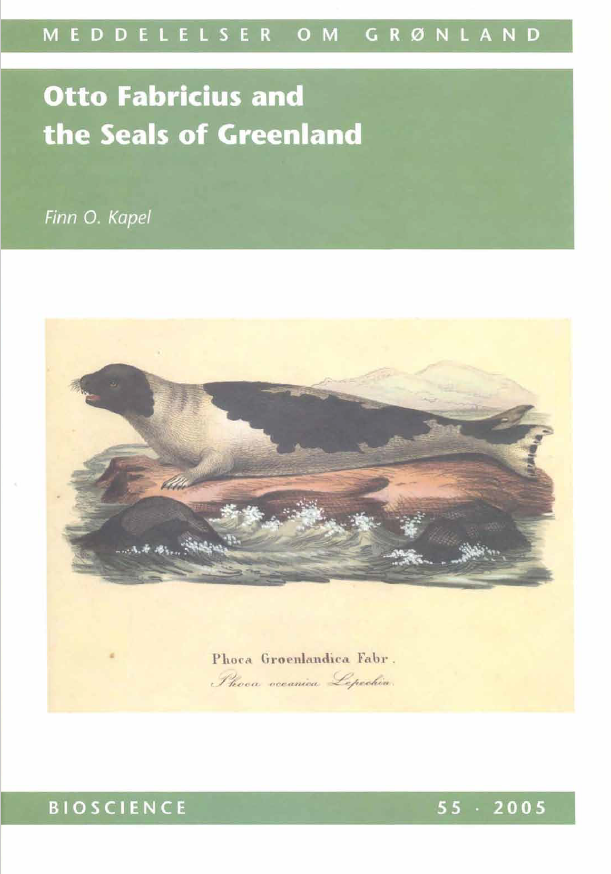Otto Fabricius and the seals of Greenland
DOI:
https://doi.org/10.7146/mogbiosci.v55.142619Abstract
The life of the Danish missionary, cleric, philologist, naturalist and ethnographer Bishop Otto Fabricius (1744-1822) is reviewed in the first part of this volume. He served as a missionary in Southwest Greenland in 1768-73 and spent his leisure time gaining experience of and collecting information on all products of nature. His work, and his importance as a cleric and as the author of contributions to the study of the Greenlandic language are briefly mentioned: but the greatest importance is attached to his contribution to the sciences of natural history and ethnology. The work that made him famous is Fauna Groenlandica (1780), written in Latin and describing 473 animal species from Greenland, of which 130 were new to science. Although his daily duties were related to his ecclesiastical posts, he continued to conduct and publish scientific studies throughout his life.
Most of this work was written in Danish, and the distribution therefore limited; however, his ethnographical works have been translated into English (Holtved 1962). Some later writers’ evaluations of Fabricius’ contributions to the study of natural history are mentioned, and an attempt is made to explore the character of the man behind the work.
The second part of this volume contains a complete, literal translation into English of Otto Fabricius’ comprehensive treatise on the seals of Greenland (1790 & 1791). A modern-style list of his references is compiled, supplemented with examples of illustrations found in these works.
Otto Fabricius’ contributions to the study of seals are evaluated in the third part of this volume. They enjoy a unique position, since they reflect the intimate knowledge of these animals he was able to obtain by living among seal hunters, as a seal hunter himself.
First he established the existence of four seals species in Greenland besides the common seal (Phoca vitulina), and provided their names to O.F. Müller (1776); secondly he presented precise descriptions of all five species in Fauna Groenlandica. Ten years later he published the treatise on the seals of Greenland; and finally he wrote a detailed description of the seal hunting implements used by the Greenlanders (1810). A comparison with the works of previous and contemporary authors demonstrates that Fabricius’ contributions in this field rank high, particularly because of their stamp of personal and direct observation and experience. This was acknowledged by contemporary scientists, and was still recognized well into the nineteeth century; but today the name and work of Otto Fabricius seem to be known only to a few specialists.

Downloads
Published
Issue
Section
License
Coypyright by the authors and the Commision for Scientific Research in Greenland / Danish Polar Center/Museum Tusculanum Press as indicated in the individual volumes. No parts of the publications may be reproduced in any form without the written permission by the copyright owners.

